Amazing Artisan Bread for 40 Cents a Loaf - No Kneading, No Fussing, No Kidding
 February 26, 2010
February 26, 2010 Update: If you're interested, I've written an update on this technique here.
What if I told you that instead of buying bakery bread for four or five dollars a loaf, you could make delicious handmade bread whenever you wanted, at a fraction of the cost and it is so easy a kid could do it? Well, read on because this method of making artisan bread at home will change your life.
You can make incredible bread without having to do all the usual time consuming tasks of breadmaking :
- no need to make a new batch of dough every time you want bread
- no need to proof yeast
- no need to make starters or prefermented dough
- no kneading!
In the last few years, several methods for making easy no-knead bread doughs have crept up on the internet and gained popularity. Among the most popular have been Jim Leahy's No-Knead Bread and Jeff Hertzberg and Zoe Francois' Artisan Bread in Five Minutes a Day. These breads drastically cut down the amount of time and work that it was always assumed had to go into artisan bread making. Even the Zen Master of bread making, Peter Reinhart, has jumped onto the bandwagon, admitting that these no knead methods have made him rethink everything he knew about breadmaking:
"The results have forced me to reconsider all of the premises I once held sacrosanct".
So what is going on here?
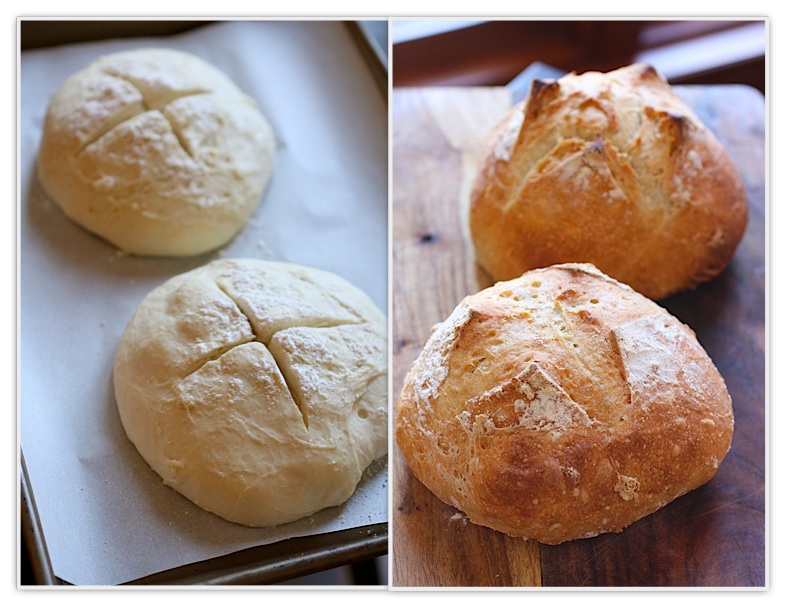
Boules Rising and Boules after Baking
The key is mixing up a high moisture, or "slack" dough, and letting it do a long fermentation in the refrigerator. It's long been known that a long fermentation contributes flavor to dough but it seems it also develops gluten and eliminates the step of kneading. The advantage in using refrigeration is that you can control the fermentation and you can make up a large batch of dough, enough for four loaves, and keep it in the fridge. If you make a very wet dough, it will be able to last in the refrigerator a long time, gaining flavor as it ferments and allowing you to make bread whenever you decide. This is not to say there is not a place for multi-stage, time-consuming bread making techniques which require 15 minutes of kneading - I love making my homemade focaccia, which takes three rises every time I make a batch. But this bread is absolutely a no-brainer. You mix up a big batch of dough in one container, a process which takes only a couple of minutes (remember, there is no proofing of yeast or starters to make). When you want bread, you cut off a hunk of dough and shape it. You can make various sizes and shapes: boules, batards, rolls or baguettes. It's just so convenient and makes such a beautiful bread with a crackly crust, you won't believe it. I've even shaped the dough into rolls. Peter Reinhart points out that the home baker has an advantage over the commercial baker with this technique - the commercial bakery does not have the refrigeration space to use a method like this. As a home baker, we can make up small batches of dough, refrigerate it and enjoy fresh bread whenever we want it. If you are buying fresh bread three times a week at $4.00 per loaf, you are spending about $50 a month on bread! This bread is only about 40 cents a loaf to make. And, since bread is best the day it is made, you don't have to drive to the grocery/bakery to get it every time you want a loaf.
To see how easy it is to get a loaf ready, you can watch me form a loaf in about 30 seconds:
This bread is very versatile, also. In both Peter Reinhart's book and Jeff Hertzberg and Zoe Francois' book, they give you many variations of breads made with the master bread recipe in each book. You can make whole wheat breads, cheese breads, herb breads, breads stuffed with sun dried tomatoes, Challah, Semolina Bread and on and on. Jeff Hertzberg and Zoe Francois have come out with another book, "Healthy Breads in Five Minutes a Day", for people who would like more whole grain recipes and gluten free breads. This is a great book, too, and has lots of wonderful ideas in it. I have all three books and strongly recommend them if you want to try easy bread making. It's nice to be able to make bread whenever the whim hits you - I have several types of doughs in my refrigerator, happily fermenting away.
In these recipes, instant yeast is used, which eliminates the need for "proofing" the yeast. Everything is simply mixed together. If you are interested in learning more about yeast, my recent "Yeast Explained" post may be of interest to you. Instant yeast is sometimes labeled "fast acting yeast" and is sold under the names of "Rapid Rise" and "Quick Rise" yeast. Also, Bread Machine yeast is simply instant yeast. I like to buy my yeast in the little jars instead of the packets because I can use only as much as I need out of the jar and it tends to be cheaper.

One way of letting the dough rest and rise is to place it on a pizza peel, dusted with some cornmeal. This works well when we make pizzas and pop them right into the oven. However, for this the bread seems to stick because you have to let it sit so long on the pizza peel and rest. So I place a small square of parchment paper on the pizza peel and put the dough right on that. When I slide it into the oven, it goes in along with the parchment paper and bakes up beautifully. If you want an extra crispy crust, just remove the parchment paper halfway through the baking time and return the bread to the pizza stone - this is what I do.
The dough can be stored in any plastic container with a lid or a bowl with plastic wrap placed over it. You want the gases to be able to escape as the dough rises, though - so wrap the plastic wrap over the bowl tightly and then puncture a little hole in the top. It is nice to have a dedicated plastic container, though, in the fridge for your dough, because you are going to just keep it in there all the time. Although these containers are recommended by the authors and the King Arthur Flour website has these nice dough rising buckets, I bought a square plastic-lidded container at my local grocery store because I thought it fit in my fridge better. You can see it in the photos below. I place the lid on tightly, but I punched a small hole in the top. This is important to do.
So get out a bowl if you don't have a plastic container, mix up a batch of dough and have your first loaf tomorrow. You won't believe it.
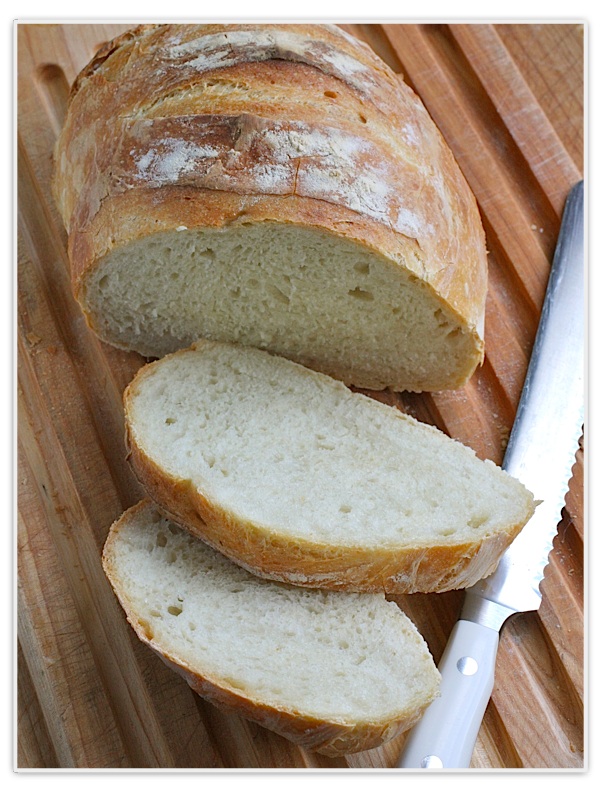
No Knead Artisan Bread
adapted from Artisan Bread in Five Minutes a Day
for a printable recipe, click here
makes four 1 pound loaves.
Ingredients:
- 3 cups lukewarm water
- 1½ tablespoons granulated fast acting (instant) yeast (2 packets)
- 1½ tablespoons kosher or other coarse salt
- 6½ cups unsifted, unbleached all purpose white flour*
(My favorite way to make this bread now is to use half bread flour, half all-purpose flour and throw in ½ cup wheat bran into the dough.)
*After baking, if your bread is gummy on the inside, try either increasing the amount of flour by ½ cup and/or increasing the baking time by 10 minutes.
Instructions:
Mixing and Storing the Dough
1. Warm the water slightly. It should feel just a little warmer than body temperature, about 100 degrees F. Warm water will rise the dough to the right point for storage in about 2 hours.
2. Add yeast and salt to the water in a 5 quart bowl or a plastic container with a lid.
3. Mix in the flour - kneading is unnecessary. (Note: I dump all this in my KitchenAid mixer, let it mix it for just about 10 seconds and then put it in the plastic container. I just find it easier to let the mixer do this part). Add all of the flour at once, measuring the flour by scooping it and leveling it off with a knife. Mix with a wooden spoon - do not knead. You're finished when everything is uniformly moist, without dry patches. This step is done in a matter of minutes. The dough should be wet and loose.
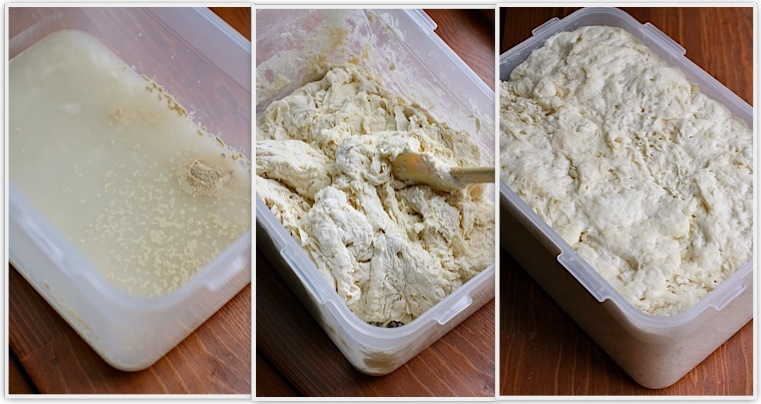
4. Allow to rise. Cover with a lid (not airtight). Lidded plastic buckets designed for dough storage can be purchased many places. (I used a plastic square food storage container I got at my local grocery store. I now use a Rubbermaid 21-cup Dry Food Container. I punched a hole in the top). You want the gases to be able to escape a little. Allow the mixture to rise at room temperature until it begins to collapse (or at least flattens on top), about two hours. Longer rising times will not hurt your dough. You can use a portion of the dough any time after this period. Fully refrigerated wet dough is less sticky and is easier to work with than dough at room temperature. So, the first time you try this method, it's best to refrigerate the dough overnight (or at least 3 hours) before shaping a loaf.
Baking
5. Shape your loaf. Place a piece of baking parchment paper on a pizza peel (don't have a pizza peel - use an unrimmed baking sheet or turn a rimmed baking sheet upside down). Sprinkle the surface of your dough in the container with flour. Pull up and cut off about a 1-pound piece of dough (about the size of a grapefruit), using scissors or a serrated knife. Gently stretch the surface of the dough around to the bottom on all four sides, rotating the ball as you go. Dust your hands with flour if you need to. This is just to prevent sticking - you don't want to incorporate the flour into the dough. The top of the dough should be smooth - the object here is to create a "gluten cloak" or "surface tension". It doesn't matter what the bottom looks like, but you need to have a smooth, tight top. This whole step should take about 30 seconds! Place the dough onto your parchment paper.

6. Let the loaf rise for about 30 - 40 minutes (it does not need to be covered). If it doesn't look like it has risen much, don't worry - it will in the oven. This is called "oven spring".
7. Preheat a baking stone on the middle rack in the oven for at least 20 minutes at 450 degrees F. Place an empty rimmed metal baking pan or broiler pan on a rack below the baking stone. This pan is for holding water for steam in the baking step. (If you don't have a baking stone, you can use a baking sheet, but you will not get the crisp crust on the bottom. You will still have a great loaf of bread. Baking stones are cheap and easy to find - Target carries them - and are a must for making pizzas, so go out and get one as soon as you can.)

8. Dust the loaf with a little flour and slash the top with a knife. This slashing is necessary to release some of the trapped gas, which can deform your bread. It also makes the top of your bread look pretty - you can slash the bread in a tic tac toe pattern, a cross, or just parallel slashes. You need a very sharp knife or a razor blade - you don't want the blade to drag across the dough and pull it. As the bread bakes, this area opens and is known as "the bloom". Remember to score the loaves right before baking.
9. Bake. Set a cup of water next to your oven.* Slide the bread (including the parchment paper) right onto the hot baking stone. Quickly pour the water right into the pan underneath the baking stone and close the oven door. This creates the necessary steam to make a nice crisp crust on the bread. Bake at 450 F for about 30 - 35 minutes, depending on the size of your loaf. Make sure the crust is a deep golden brown. When you remove the loaf from the oven, you will hear it crackle for a while. In baking terms, this is called "sing" and it is exactly what you want.
* update: I have recently begun skipping this step with the water. I believe it caused my oven window to eventually crack and I have found that my bread is still great even without the water. If you want an extra crispy crust, though, it is worth doing once in a while
10. Cool. Allow the bread to cool for the best flavor and texture. It's tempting to eat it when it's warm, and that's fine, but the texture is better after the bread has cooled.
11. Store the remaining dough in the refrigerator in your lidded (with a hole punched in the top) container and use for up to 14 days. Every day your bread will improve in flavor. Cut off and shape more loaves as you need them. When your dough is gone, don't clean the container. Go ahead and mix another batch - the remaining bits of dough will contribute flavor to the next batch, much like a sourdough starter does!
Bread is best eaten the day it is baked. Leftover baked bread is best stored at room temperature, unwrapped. Simply place the cut side of the bread on plate or counter. If your bread is gummy on the inside, try either increasing the amount of flour by 1/4 cup and/or increasing the baking time by 5-10 minutes.
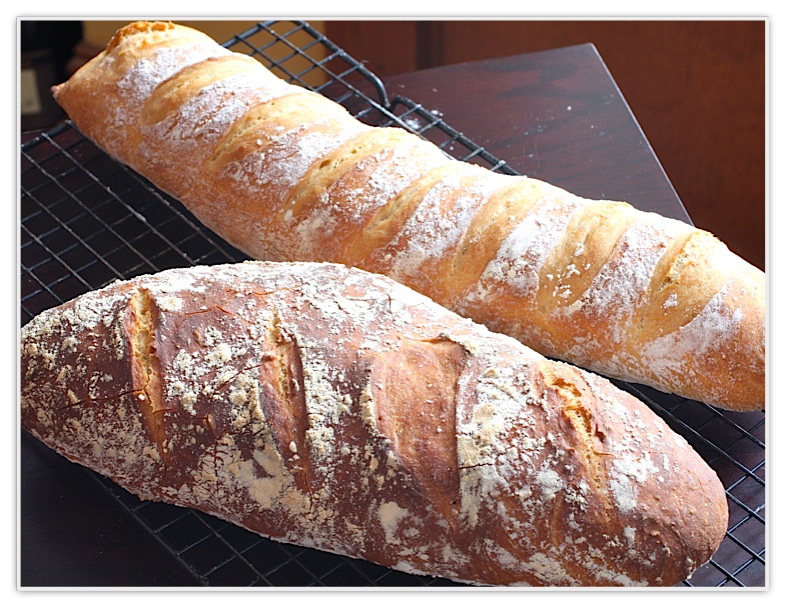
Check out the Artisan Bread in Five Minutes a Day website - Jeff and Zoe have great tips and recipes over there.

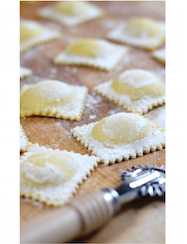
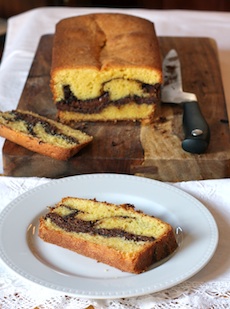
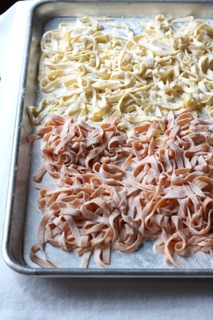
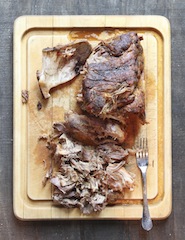
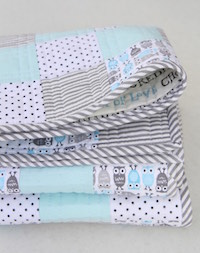
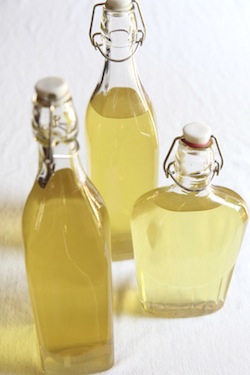
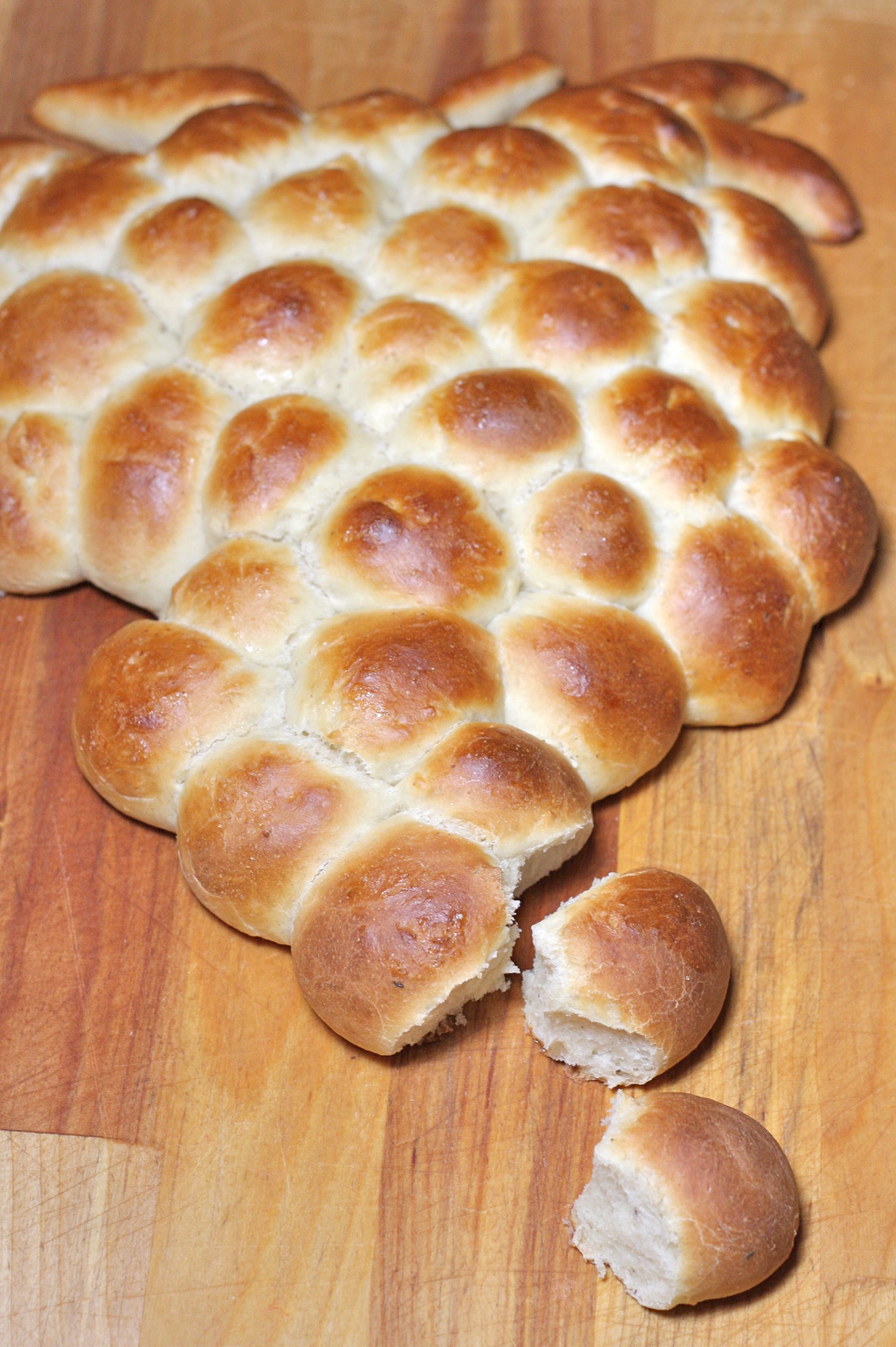

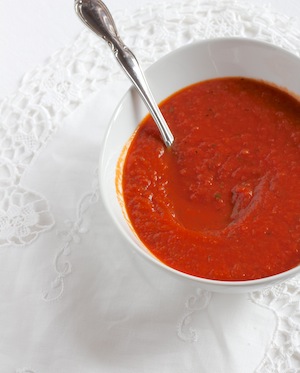
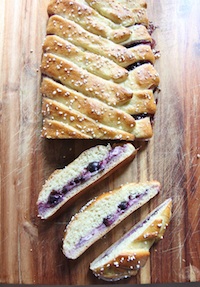

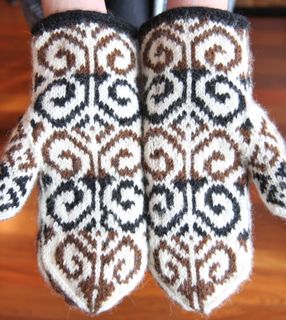


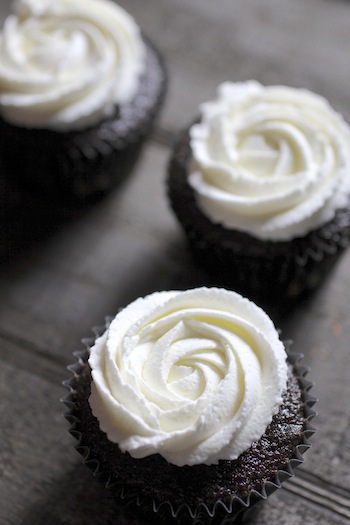



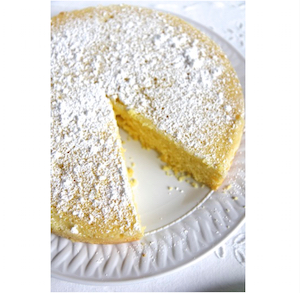
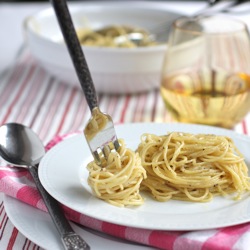


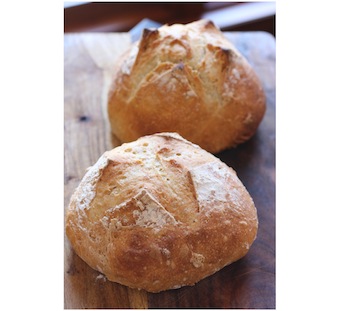


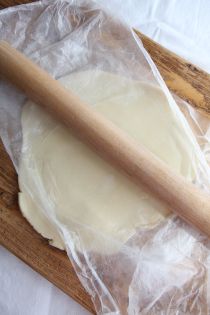

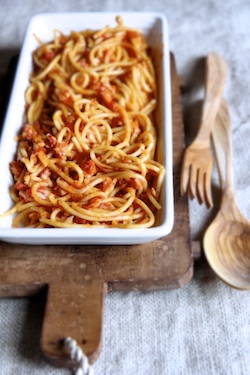
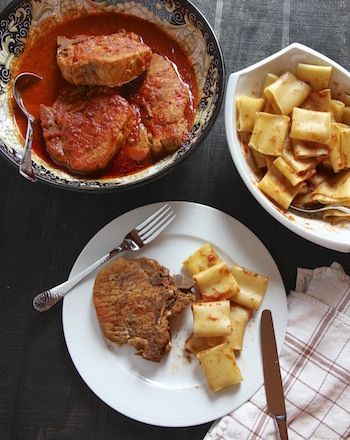









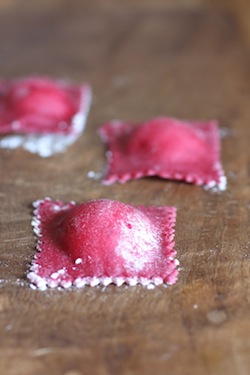

Reader Comments (468)
I am a huge No Knead Bread fan. I am looking forward to trying this recipe.
I loathe spending 3-4 dollars for a loaf of ciabatta;it's only flour and water (well, sort of)!! I can't wait to try this recipe. THANK YOU!
Wow what a great recipe! Thanks! I am going to make this today, and the next time I have company I will bake it up!
Great looking bread recipe! It does seem SO easy! Thanks for the video!
Ciao, I am heading into the kitchen and trying this today! I can smell that bread baking now!
thanks so much for sharing this!! i am going to make this this weekend. i just tried "italian scala bread" and it could have come out better?? if you have any advice on scala i'd love your advice. also, the pictures and write up are great! thank you agian. :) barb
I grew up on homemade bread and have fond memories of coming home from school to the aroma of bread fresh out of the oven. For my snack, I would take a slice (or two) and dip it into the pot of spaghetti sauce simmering on the stove. YUM! Unfortunately, I never followed in my mother's (and grandmother's) bread-baking shoes, but might try this method. I prefer whole wheat breads though, so would the proportions change using whole wheat flour?
Beautiful loaves. I've made no-knead bread before and it always tastes great, but I've had trouble with my loaves turning out too "flat" at times. Perhaps my dough was too wet? Or maybe chilling the dough makes it easier to form? I'll have to give this large-batch recipe a try.
Your post and video are wonderful, but it is your bread that is truly spectacular! Thank you for trying the recipe and sharing your lovely results with your readers.
Happy baking and enjoy all the bread! Zoë
How long do you think the "stage 4" bread dough would keep in the fridge? Have you halved the recipe successfully (4 loves is quite a lot for even a carb-lover like me!) :)
So making this! Could this be made with part rye flour too?
This is absolutely impressive. I know how much work you put into this post, Elaine, and it's beautiful. I've been researching the numerous no-knead bread recipes out there, but you've done an awesome job presenting this one. Gotta make it now. Thank you!
From The Italian Dish:
Judy F.: Yes, the authors all have whole wheat version in their books. With whole wheat flour, however, you need to add some sweetener to make it a little more palatable - usually honey, sugar, molasses or a combination. I'm finding King Arthur White Whole Wheat flour a great alternative to regular Whole Wheat - all the fiber but a little milder tasting. Also, you can use half Whole Wheat and half regular AP.
Dawn: If your loaves are too flat after baking, I would wonder what kind of flour did you use? Was it a low protein flour or was it whole wheat flour, which will not rise like regular AP flour. If so, you need to add some bread flour or vital wheat gluten, which will help your bread to rise. Try again!
Zoe: You guys rock!
Elaine: The dough will keep up to two weeks in the fridge and yes, I have halved the recipe successfully.
Tan: The authors do have rye flour recipes in their books.
We have a batch of this dough resting right now:) love it. great post and gorgeous photos!
Hi.... great post... I'm just wondering about the flavoured breads, like cheese, sundried tomato etc... when do you add this to the dough?? or are they separate different recipes?
I'm not a bread maker but I am going to try this - but I don't think I'm brave enough to try it for tomorrow's spaghetti dinner w/family coming...
Elaine, this looks wonderful! I have not made much bread (except in the bread machine) and I don't think that really counts. I will definitely try this. My girls are coming for a few days and they will love this. I will check out the whole wheat recipes and the cookbooks too. I love your video and I am impressed, you have gotten even better, one more time! Thanks
I spent all summer making this bread. For the college student (who is at all inclined to play with the oven) this has to be on of the best ways to save money. I have contemplated selling my loaves at school. I ended up liking a combination of rye and and white. Depth, but good eat-ability for the white bread lovers.
Hi, read this with interest yesterday (and then sent to a friend) as I was deeply ensconced in my own bread-making session using a natural starter (from Moro, the cookbook). Your loaves look a little heartier, though still wetter than traditional doughs, and can stand on their own, which I like-mine are so wet, that you have to shape in a bowl, or pot, and pop in the oven as is. The bread, though-has a wonderful, chewy texture. Will have to try your method as well. Thanks for sharing, and for taking a peek at my site recently.
Cheers
This bread looks fantastic I'm trying it right now! My first time @ your site and I've found some great recipes already-can't wait to try them all,beautiful pics as well.
Elaine, You are an artisan bread baker, and you always inspire me! Each loaf looks perfect! Loved your video and the sound of your voice, and you know how much I enjoy your step by steps.
This is a fabulous solution to my daily bread pick-ups...and a lot cheaper! Thanks!
Thanks for sharing this. I have made two batches since your post. I couldn't believe how easy it was and how great it tastes. My son said it is the best bread he has ever had. We used it for pizza dough also and it worked really well.
I absolutely love this bread recipe - I even did an America's Test kitchen bread that I might like even better though!
http://biz319.wordpress.com/2010/03/01/best-bread-ever/
It made the crunchiest crust - it cooked in a dutch oven, and suprisingly only calls for 1/4 tsp. of yeast!
Okay, now I want a piece of bread with honey and butter!
A great post, but not yours. You just took majority of the information provided in the "Artisan Bread in 5 minutes a day" book and posted it. I have the book. Even the "store bread at room temperature cut side down" is from there!
Love your post- regardless where you got your information (see above comment).
You have a great site with beautiful recipes. Thanks for sharing.
Would you please comment on an earlier ? someone posted- when should additions be added? I would like to make a loaf of cheese bread and am not sure when the cheese should be mixed.
Thanks in advance for your reply.
From The Italian Dish:
Lee: Gosh, I thought it was incredibly clear in my post that this technique was from "Artisan Bread in 5 Minutes a Day" - even the author of the book, Zoe Francois, left a nice comment earlier on this post. Huh. I guess I just don't know what to say to your comment.
Nicole: I made cheddar cheese bread from the book and I just added a cup of shredded cheese right along in the dough when I made it. My husband loves it. Thanks for your kind words.
I just love your blog. I don't mean to be cheesy, but it is so refreshing, so suits my curiosities and style of cooking/eating/etc. Thanks for writing!
I'm SO excited to try this! I had the worst time trying to bake bagets last year that I haven't attempted bread since. Looking forward to experimenting -- thanks for such an informative post!
Elaine - I have made 4 loaves with this recipe now, each better than the previous. I tried the enameled dutch oven approach on the most recent (as mentioned in the Leahy link you included), and I think it's the best so far, although it did cause it to take longer, but gave it a fantastic golden color.
Wonderful - Thank you so much!
I can't wait to try this although I don't think I can eat four loaves in 14 days! I guess when I start doing this I'll just have to give away two loaves for every two that I make... who wouldn't love getting a beautiful loaf of hand made bread?
Hi, I have tried this recipe and it is FANTASTIC! Thank you so much for posting it. It turns out wonderful every time (I have never had success with bread before!!).
Your video was one of the most helpful things. I was wondering how it would be possible to shape a larger or longer-shaped loaf than the one you show in the video? We tend to polish off the ones the size you show in the video pretty quickly.
From The Italian Dish:
Rezita: I'm so glad that you love making this bread. We are totally hooked on the convenience of it and not running to the bakery all the time. Shaping a very large loaf is a little difficult but if you do, you need to give it more cooking time. Instead of doing that, I would simply shape two regular size loaves and bake those. I think that would be easier. Good luck!
I really hope you read and respond to this asap since I would love to make this dough tonight! Please forgive my ignorance, but when your recipe reads 2 packets (for the yeast) how much is that? My yeast is a long "strip" of four 1/4 oz. envelopes. Would all four envelopes equal 1 packet in the directions or just one of the squares? :)
I can't wait to try this!
From The Italian Dish:
Nicole: One packet means one of the yeast envelopes. Each yeast envelope (no what what brand) is 2-1/2 teaspoons of yeast, so two of the envelopes would be about 1-1/2 Tablespoons. For more about yeast, you might want to read my yeast post: http://tinyurl.com/yb753n3 . Enjoy making the bread! You will love it and if you have any questions, don't hesitate to ask.
You are a life saver! Thanks so very much for the quick reply.
hi elaine.....
i cannot seem to find unsifted flour anywhere in my town.......?!?
Will presifted be a problem ???
xo
Just wanted to update you that I finally baked my bread tonight. It was just as yummy as it looked (and it looked wonderful!). Thanks again for the post.
PS- Had a problem with my pizza stone at the last minute so had to use a cookie sheet. I was expecting less crunch but am happy to report the crust was still crunchy!
Thanks so much for this recipe! I tried it tonight, and I may have eaten almost half a loaf by myself. I adore your blog; I discovered it last fall by way of tastespotting.com -- the blueberry lemon cake. Your recipes have become my "secret weapon" in the kitchen, always a good way of wowing guests (and myself!).
Hi, read this with interest yesterday as I am a big bread lover. I have been considering making my own bread since I cannot have much sodium in my food. At the bakery I have only found 1 type of bread that has 10 mg of salt per slice. Do you need to use the salt in your recipe? Is it there for flavour or is there another need for it? Your loaves look great and I can certainly handle the skill level required.
Thanks for sharing your book references and baking tips.
Don
From The Italian Dish:
Don: The salt is only there for flavor, so you can either cut back on the amount or leave it out. Happy baking!
Hi, Came across your site through ruhlman.com site. I can't tell you how glad I am to have your blog/site to refer to. I thought I would never be able to find some of our familiy's Italian recipes but I think I hit gold. I so wanted to send you a photo of my Artisan Bread, or should I say your bread or should I say Jeff Hertzberg, Zoe Francois bread....no matter whose bread this is, it is wonderful, crusty, easy and oh so good. Next on to your Easter Bread. Love this place, but I've created a bread monster, my husband would like this bread on a regular basis, and I think I am able to meet his demands. --marion
Great looking bread....great informative post, your blog gets better every time I return.
I've got a batch going in the refrigerator right now and I can't wait to bake a loaf. Thanks so much for sharing! I love your blog!
Hello, I have just found your blog site, and am very impressed. How do you think the bread recipe would go in a wood fired pizza oven.
From The Italian Dish:
Margherita: I would think that it would bake up very nice in a wood fired oven! You might not want it as hot as you would for a pizza, though. It needs to bake longer. Let me know how it turns out!
Hi, tried it in the pizza oven, it was wonderful. my family ate all of it even after having dinner. it was wonderful with olive oil and oregano sprinkled on top. it will be a favorite in my household from now on i'm sure.
Came across this blog through a friend. The bread looks absolutely delicious. One quick question. So after mixing ingredients you let the dough rest for about 2 hours and then (if you want) put in the fridge right? Or do you put it in the fridge immediately after mixing?
Thanks!
Hi! Just wanted to say thank you for introduciing us to this wonderful bread! I've been making it for about three weeks now and got the book last week and am so excited to try more variations! I made up a new batch of dough late last night and meant to put it in the fridge after two hours, but completely forgot about it and it sat out all night long. I put it in the fridge in the morning, but not sure if the dough is spoiled and should be tossed out or if it's still okay. Didn't find anything about this in the book, so I'm hoping you'll have some advice for me! : ) I have family coming this weekend and wanted to have the dough ready to go! Thank you again! I've been having fun trying your soup recipes too and they are wonderful!
From The Italian Dish:
Lynn:
I bet your dough was huge in the morning! I have never left it out all night. I would just punch it down and refrigerate. It has nothing in it that could spoil, but the yeast probably exhausted itself. Let me know how it works out!
Elaine